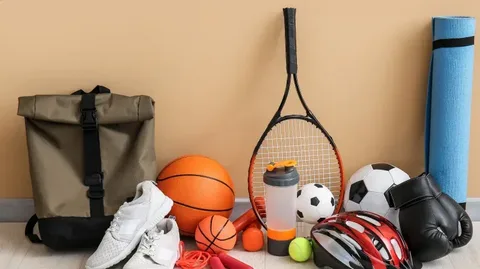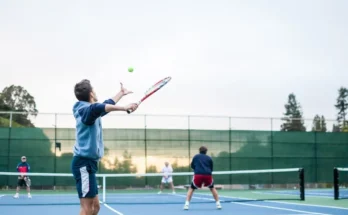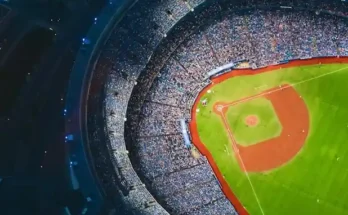Sports are more than games. They are living, breathing theaters where passion, discipline, heartbreak, and euphoria collide. From dusty backyards to packed stadiums echoing with roars, sports capture something primal in us—a need to push limits, to belong, to rise above. They are about more than trophies or scoreboards. They are about moments. The gasp of a crowd. The silence before a final shot. The triumph of effort over odds.
In every corner of the globe, sports have carved stories into the human journey. They’ve toppled barriers, healed wounds, sparked revolutions, and built legends. Let’s journey into the heart of sports—not as a spectator, but as someone walking the field, feeling the weight of the game, and understanding its deeper meaning.
The Universal Language of Sports:
You don’t need to speak Portuguese to feel the magic of Brazilian football. You don’t need to understand Japanese to admire the precision of sumo. Sports are a language of movement and emotion—where joy, pain, struggle, and victory are instantly understood. When a sprinter collapses after a race, gasping for breath, the message is clear in every culture: this is effort at its limit. When two athletes hug after a brutal match, we all know what it means. Sports unite people, creating bridges where politics, language, and ideology often fail.
Many of the world’s greatest athletes started with little more than a dream and an open space. A dirt pitch. A sidewalk. A makeshift goal. From there, talent met passion and evolved into something greater than personal ambition. It became an inspiration.
Cristiano Ronaldo, once a skinny boy from Madeira, became a global icon. Serena Williams transformed tennis with grit and grace. These aren’t just stories of talent. They are testaments to how sports can be the elevator out of hardship, the stage for dreams too big to contain.
The Psychological Power of Play:
-
Mind Over Muscle
Sports are as much mental as they are physical. A tennis player’s internal battle during a fifth-set tiebreaker is a war of nerves and focus. A golfer’s calm during the final putt reflects hours of mental training. It’s not always the strongest or fastest who win—but often the most mentally composed.
The concept of “flow”—being so immersed in an activity that time disappears—is common among athletes. This mental zone, where action and awareness merge, is often described as a kind of athletic meditation. It’s a reminder that while muscle may win battles, the mind often wins championships.
-
Confidence, Resilience, and Failure
Sports teach failure. And in that failure, they teach resilience. Every missed shot, every lost game, is a chance to learn, regroup, and rise again. For young people especially, sports offer a safe place to fail—and a structured way to bounce back.
Confidence doesn’t come from winning. It comes from knowing you’ve faced defeat and kept going. Sports harden character while softening egos, shaping people into individuals who are stronger in all areas of life.
Culture and the Game:
-
National Pride and Global Eyes
There’s a reason the World Cup can bring entire countries to a standstill. When a team wears national colors, they carry the weight of a people’s hopes and history. An Olympic gold is more than a medal—it’s a symbol of excellence that represents millions.
But while sports can stoke patriotism, they can also bring nations together. Who could forget the “handshake of peace” at the 1995 Rugby World Cup in South Africa, where Nelson Mandela wore the Springboks jersey to unify a fractured nation? Or when North and South Korean athletes marched under one flag?
-
Street Games to Stadium Lights
While professional sports dominate headlines, street sports and local games often hold deeper meaning. A pickup basketball game can unite a neighborhood. A cricket match in a remote village can be the highlight of a season. These games are the roots of sport culture—where love for the game exists without cameras or cash.
The cultural expressions of sport differ, but the heartbeat remains the same. Whether it’s sepak takraw in Southeast Asia or Gaelic football in Ireland, each region adds its own flavor to the global stew of sports.
The Changing Face of Sports:
-
Women Breaking Boundaries
Women’s sports have exploded onto the global stage, breaking stereotypes and inspiring generations. From Billie Jean King’s legendary tennis battles to Megan Rapinoe’s unapologetic leadership in soccer, women athletes are not just playing—they’re rewriting the rulebook.
Today, female fighters headline UFC cards, WNBA games command prime time, and young girls everywhere wear jerseys of women who once weren’t allowed in the room. Sports are no longer a man’s world—they’re a platform for everyone.
-
Technology, Data, and the Future of Performance
In the modern era, sports are not only fueled by grit—they’re enhanced by science. Data analytics track every heartbeat, sprint, and angle. Virtual reality helps train athletes in simulated pressure situations. Wearable tech can detect fatigue before it leads to injury.
Even fans experience sports differently now—with instant replays, augmented reality experiences, and fantasy leagues turning passive viewers into engaged participants. The game is evolving, but the soul remains unchanged.
Sports as a Tool for Healing and Change:
Athletes today are more than just players. They’re influencers, activists, and role models. Colin Kaepernick’s kneel sparked national conversations on race. Naomi Osaka paused her career to speak about mental health. These aren’t distractions—they’re demonstrations of how sport and society are intertwined. When athletes speak, the world listens. And sports become more than entertainment—they become vehicles for awareness and action.
From PTSD recovery to youth development in conflict zones, sports are being used as therapy worldwide. Running programs help veterans find peace. Soccer leagues for refugees build community. For many, the rhythm of sport—the discipline, the team, the goal—is a way back to themselves. Even in prisons, sports offer hope, structure, and second chances. The field becomes a place not just to compete, but to heal.
Conclusion:
Sport is a microcosm of life. It offers lessons in patience, teamwork, failure, victory, and identity. It can reduce people to tears or lift them to joy. It can make heroes out of underdogs and villains out of champions. It’s unpredictable, raw, and real.
But most importantly, sports never truly end. Seasons close. Players retire. Matches finish. But the spirit of the game lives on—in schoolyards, in streets, in souls. It whispers to the child with a ball at their feet and the elder watching a replay of their favorite match.
Because the true beauty of sport lies not in how it’s played—but in how it plays us, connects us, and changes us, one game at a time.




